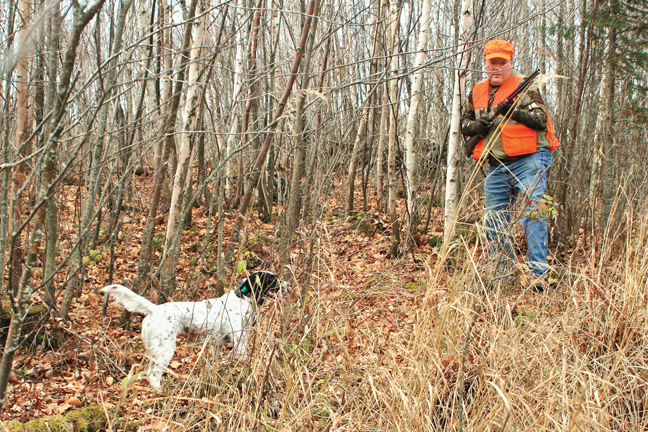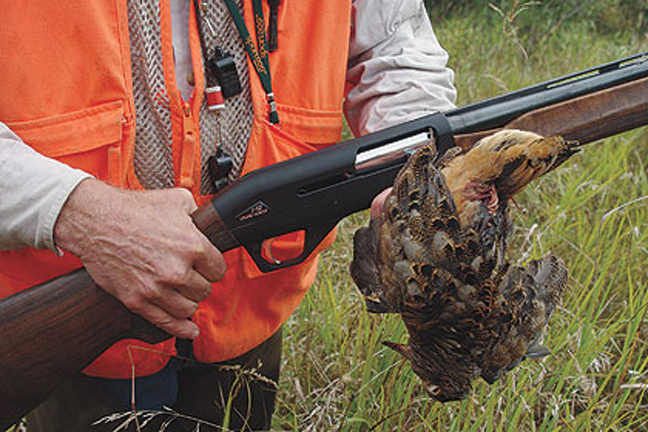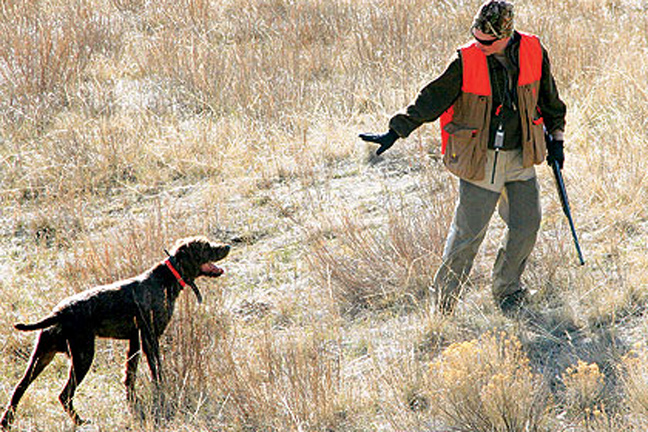Ask anyone – me, for instance – about the bird that takes the highest degree of skill and intelligence on the part of a dog, and I can answer without hesitation that it would be the ruffed grouse.
That doesn't mean some of the others don't have their moments chukars and pheasants come to mind but for sheer duplicity, ruffed grouse take the cake. Great grouse dogs seem to have a feel for handling grouse; the right mix of caution and persistence needed to pin a bird that is as unpredictable as it is tough to hit.
Which, of course, makes the next question entirely predictable: Where can you get a dog like that?

Any breed can develop into a great grouse dog, and they don't have to come from a kennel that specializes in them, although that's certainly a step in the right direction. More than anything, you need a dog that's intelligent, because an intelligent dog will continue to learn for the years it takes to really master the game.
So the first step in finding a great dog is to buy a puppy from great parents. You've heard me preach that in these pages ad nauseam.
But there's another part almost as essential in making a great dog training. No matter how hard a dog hunts, no matter how intelligent it is, if it continually puts up birds out of range and refuses to hunt with you, that dog will never become great. I'm not a believer in letting a dog "train itself"; don't even get me started.
Molding a young dog with repeated lessons gets him thinking and acting in a way that works for everyone concerned. Here's one thing that works for me: a dog that quarters to the front anywhere from 40 to 100 yards out. That means a dog that, in the woods, has a close range.
A lot of people think the close-ranging dog I've just described is a dog that is always within sight. Nothing could be further from the truth. A dog that is always in sight in the grouse woods is hunting too close. A certain amount of unease is involved in hunting over a dog you can't always see, but that's what bells, beepers and GPS collars are for.
Natural Ability
How can you train a dog to hunt close? It can be done, but it's vastly easier to buy a puppy that does it naturally. Don't buy a puppy from big running parents, no matter how many championships they have won. There are no guarantees, but close-ranging parents typically produce close-ranging pups.
Some breeds are naturally more close ranging than others, including Brittanys, griffons, wirehaired pointers and other versatile breeds; and some, but not all, German shorthaired pointers. But there are plenty of close-ranging English setters and English pointers too; you just have to look a little harder to find one.
Next, you want a dog that quarters to the front. Dogs that continually backcast will certainly find birds, but they're annoying to hunt over and slow your forward progress to an uncomfortable crawl. Luckily, this is something you can teach. Here's what I learned from one of Bob Wehle's books.
 When your new pup is three or four months old, take it for walks on a long lead. Let the dog amble or romp beside you, but every time it stops or lags behind, clap your hands and urge it to run ahead. Eventually, precede your hand claps with two toots on your whistle. That's all there is to it.
When your new pup is three or four months old, take it for walks on a long lead. Let the dog amble or romp beside you, but every time it stops or lags behind, clap your hands and urge it to run ahead. Eventually, precede your hand claps with two toots on your whistle. That's all there is to it.
You can add in e-collar correction later as the dog gets a bit older, but you'll be surprised at how quickly a young pup will learn you want him to stay in front of you, not behind. By the time you begin actually hunting over that dog, he'll be tuned into where you are, and naturally time his quartering to stay in front.
When he doesn't, a couple of toots on your whistle will remind him where you want him to be.
Remain Steady
You don't have to teach him to be steady to wing, shot and fall although it's certainly nice but steadying him to flush will make your life so much more pleasant that you'll wonder how you ever got along without it.
A dog that's steady as the bird flushes won't race forward and create additional problems out there in the woods where you can't see him, and he is in a much handier position to be directed to a retrieve in the highly unlikely event (in my case, anyway) that you actually hit the bird you're shooting at.
I steady my dogs on a whoa board. After the initial stages of teaching the dog to whoa on a bench and then reinforcing what it's learned on a progressively longer lead, I plunk it down on the whoa board, plant a pigeon in a cage a few feet in front of it, and command "whoa."

Each time it breaks for the bird I physically pick it up and return it to the board, eventually progressing to collar corrections instead of physical lifts. (Note: your dog must be collar conditioned before doing this drill.)
When I've got him minding his manners and not moving, I release the bird, and again physically pick up the dog and return it to the board if he breaks to run after the bird (and he will). Once I've got him good and steady, I teach him to release on both a voice command or a gunshot exactly how I'll do it in the field.
Next, if my dog won't retrieve naturally, I force-break him. Some folks don't care if their dog doesn't retrieve the birds they shoot, and that's certainly their prerogative. And some folks don't like force-breaking (I don't either).
But finding a wounded woodcock or grouse in the woods is nearly impossible, and although most pointers aren't great retrievers, that magic nose on the end of their noggin makes them far better at finding almost anything than you or I could ever hope to be, no matter how half-hearted their effort.
Force-breaking takes time, so if you've never done it before, know what you're getting into before you start. Most of the big-name retriever-training pros have put out CDs and the half-dozen or so I've looked at were comprehensive and thorough. For those who want something they can actually read, I strongly recommend Smart Fetch by Evan Graham. Pick a style and stay with it. It typically takes six to eight weeks to force-break a pointer, sometimes longer.
Finally, hunt them every chance you get. One of the best grouse dogs I ever hunted over was a lanky belton setter that had how shall I say this? rather hit or miss formal training but was hunted 100-plus days a year, courtesy of her owner, who at the time was a Wisconsin grouse guide.
Yeah, she wasn't too quick to recall on the whistle, and wouldn't always whoa on command. But she found grouse like God's own bird dog, and when her bell fell silent and her beeper clicked on, you could just about bet the ranch that there would be a bird under her nose. And in the grouse woods, that's like money in the bank.






